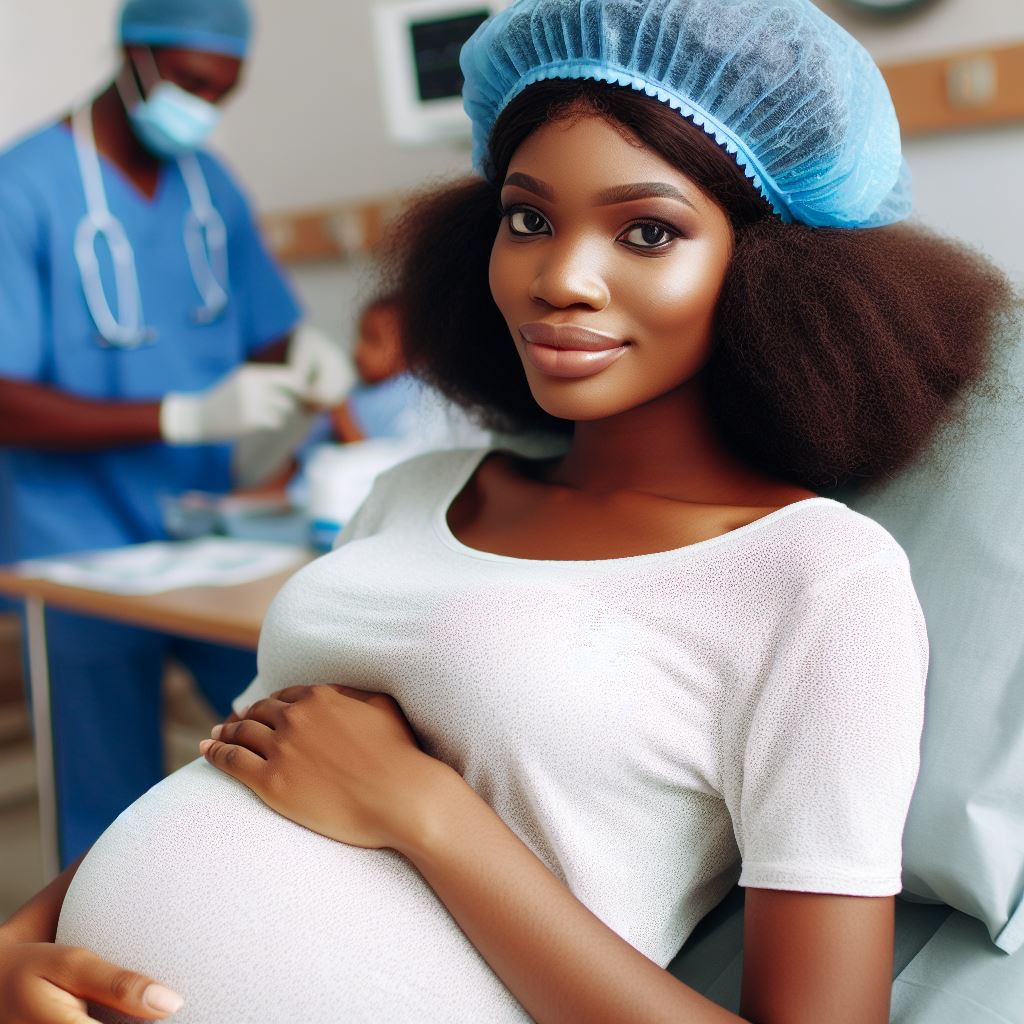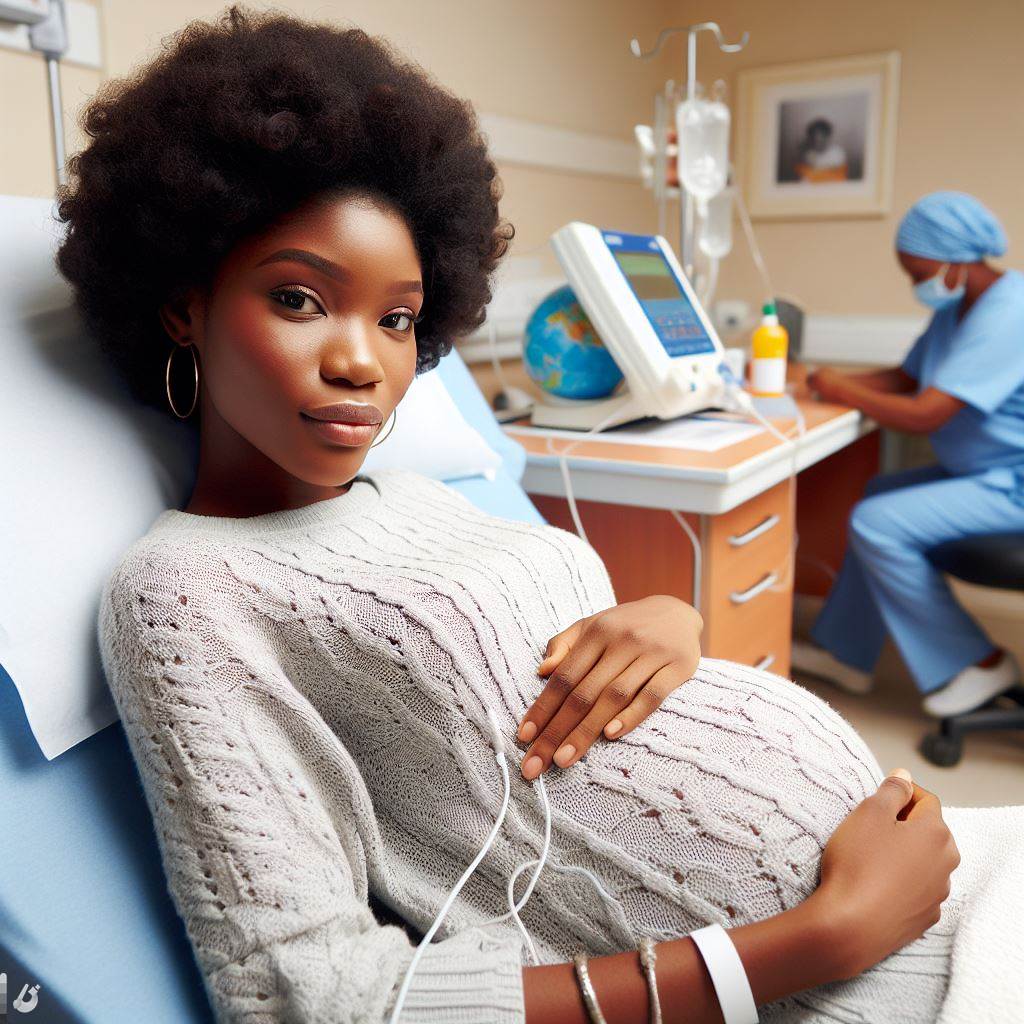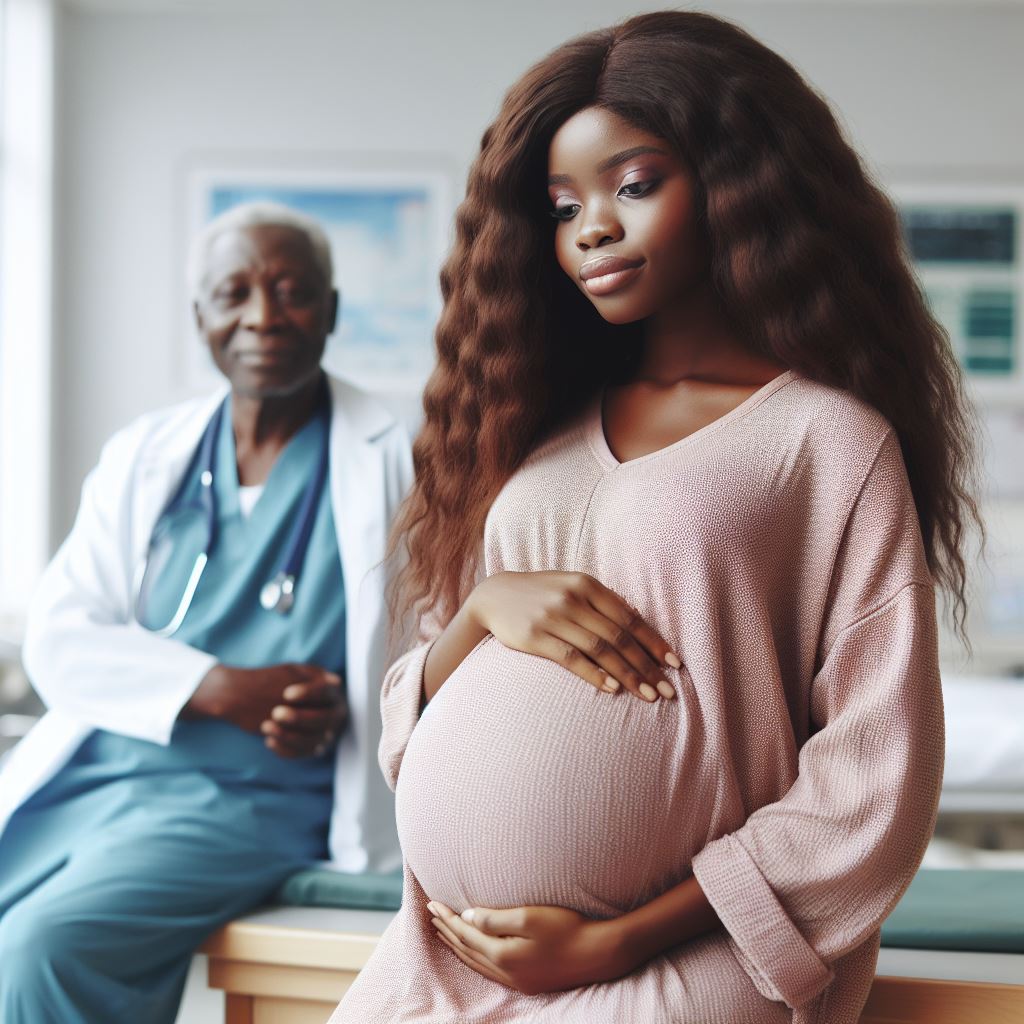Introduction
In this blog post, we will explore a Week Baby Hair and Skin Develop.
Welcome to Week 22 of your baby’s development! This stage marks significant progress in your little one’s journey.
During this time, your baby’s hair and skin undergo crucial developments that require special attention.
Nurturing and caring for their delicate hair and skin hold paramount importance in ensuring their well-being.
Babies’ hair starts to grow at varying rates, some having a full head of hair while others may have just a few strands.
Regardless, this phase signifies a critical stage of hair development. Proper care plays a pivotal role in maintaining healthy hair growth and texture.
Similarly, your baby’s skin is also evolving rapidly. It’s significantly thinner and more delicate than adult skin, making it more vulnerable to irritants and environmental factors.
During this time, the skin’s protective barrier is still developing, making it essential to safeguard it against potential harm.
Caring for your baby’s hair involves gentle washing with mild, baby-specific shampoos.
Avoid harsh chemicals and opt for natural, gentle products to maintain their scalp’s health.
Gently brushing your baby’s hair can also stimulate blood circulation and promote healthier hair growth.
Regarding skin care, it’s crucial to keep it hydrated by using hypoallergenic moisturizers suitable for sensitive skin.
Additionally, ensuring your baby’s clothes are soft and made of breathable fabrics can prevent skin irritation and discomfort.
Moreover, protecting your baby’s skin from the sun’s harmful rays is vital.
Use hats, clothing that covers their skin, and baby-safe sunscreen for any exposed areas when going outdoors.
Parenting Made Just for You
Get personalized Parenting Solutions tailored to your child’s needs. Transform your parenting journey with expert guidance in 1-3 days.
Get StartedIn essence, nurturing your baby’s hair and skin during Week 22 is crucial for their overall well-being.
By adopting gentle care routines and using appropriate products, you can support the healthy development of your baby’s hair and skin, providing them with a solid foundation for growth and vitality.
Understanding Baby’s Hair Development
During pregnancy, a baby’s hair starts to grow around the 14th week of gestation.
By the time the baby is born, they usually have fine, soft hair covering their scalp.
Once the baby is born, their hair starts to grow at a rate of about half an inch per month.
By the end of the first month, some babies may start losing their hair, which is completely normal.
The hair loss is typically temporary and is replaced by new hair growth.
The Importance of Proper Nutrition for Healthy Hair Growth
- Proper nutrition plays a vital role in promoting healthy hair growth in babies.
- A well-balanced diet that includes protein, vitamins, and minerals is essential for hair development.
- Breast milk or formula provides the necessary nutrients for hair growth during the first months.
- Once the baby starts solids, include foods rich in iron, zinc, and vitamin A for healthy hair.
Common Hair-Related Concerns in Babies
- Cradle cap is a common hair-related concern in babies, characterized by flaky, crusty patches on the scalp.
- It is not harmful or contagious but can cause mild discomfort and itchiness for the baby.
- Cradle cap can be gently treated by massaging the scalp with baby oil and using a soft brush to remove flakes.
- In severe cases, a doctor may prescribe medicated shampoos or creams to alleviate symptoms.
Tips on How to Care for Baby’s Hair
- Gently wash your baby’s hair using a mild baby shampoo and warm water.
- Avoid using adult hair products or harsh chemicals that may irritate the baby’s scalp.
- After washing, pat the baby’s hair dry with a soft towel. Avoid rubbing vigorously to prevent hair breakage.
- Use a soft baby brush or a wide-toothed comb to detangle the hair gently. Start from the roots and work your way down.
- Do not use tight hairstyles or accessories that may put strain on the baby’s fragile hair.
- Regularly trim the baby’s hair to maintain a neat appearance and prevent tangles.
In fact, understanding the stages of baby’s hair development, the role of nutrition, and how to care for their hair is crucial for parents.
By providing proper care, parents can ensure healthy hair growth and address common concerns like cradle cap with ease.
Read: Pregnancy and Dizziness: What’s Normal?
Nurturing Baby’s Skin
Different layers of baby’s skin and its functions
- The skin is made up of several layers, including the epidermis, dermis, and subcutaneous tissue, each with its own important functions.
- The epidermis is the outermost layer of the skin, providing protection from external factors and regulating moisture levels.
- The dermis, located beneath the epidermis, contains blood vessels, nerve endings, and sweat glands that help regulate body temperature.
- Lastly, the subcutaneous tissue serves as insulation and padding for the body.
Common skin conditions in infants, such as baby acne and milia
- Baby acne, also known as neonatal acne, is a common skin condition characterized by small red or white bumps on the baby’s face.
- Milia are tiny, white, benign cysts that appear as small bumps on the baby’s nose, chin, and cheeks.
- While these conditions usually resolve on their own, it’s important to avoid picking or squeezing them as it may lead to infection or scarring.
Tips on how to keep baby’s skin moisturized and protected
- To keep your baby’s skin moisturized, apply a gentle, hypoallergenic baby lotion or cream after bath time.
- Using lukewarm water instead of hot water while bathing can also help prevent skin dryness.
- Protect your baby’s skin from the sun by dressing them in lightweight, breathable clothing and using a broad-spectrum sunscreen.
- Avoid exposing babies under six months old to direct sunlight as their skin is more sensitive and susceptible to damage.
Importance of using gentle and baby-friendly products
- When selecting products for your baby’s skin, opt for natural and fragrance-free options to minimize the risk of irritation or allergic reactions.
- Check the ingredient list for potentially harmful substances like parabens, phthalates, and sulfates.
- Regularly washing and sterilizing baby’s clothes, blankets, and toys can help eliminate potential irritants and allergens.
- Ensure the detergent you use is mild and free from dyes or fragrances that could irritate the baby’s skin.
- Remember, every baby is different, so it’s essential to pay attention to how their skin reacts to certain products or environmental factors.
- If you notice any persistent skin issues or unusual symptoms, consult a pediatrician for proper diagnosis and treatment.
Read: Headaches in Pregnancy: Common Signs
Tips for Promoting Healthy Hair and Skin Development
Significance of a balanced diet and hydration for overall hair and skin health
A well-balanced diet rich in vitamins, minerals, and nutrients is crucial for promoting healthy hair and skin development in babies.
Proper hydration is also essential for maintaining the moisture levels in their skin.
Benefits of massaging baby’s scalp and using natural oils
Gently massaging your baby’s scalp stimulates blood flow to the hair follicles, promoting hair growth.
Unveil the Perfect Name that Tells Your Family's Story
Let us help you find a name that embodies your family's values, traditions, and dreams. Our personalized consultation weaves cultural insights to create a name that's uniquely yours.
Get StartedUsing natural oils like coconut oil or almond oil can moisturize the scalp and nourish the hair.
Avoiding harsh chemicals and excessive sun exposure
Baby’s skin is delicate and sensitive. Harsh chemicals present in certain shampoos, soaps, or lotions can cause irritation or allergic reactions.
Protect your baby’s skin from harmful UV rays by using sunscreen and avoiding direct sun exposure.
Consult a pediatrician if they notice any abnormalities or concerns
If parents notice any unusual changes in their baby’s hair or skin, such as excessive hair loss, rashes, dryness, or persistent skin issues, they should consult a pediatrician.
A professional evaluation can help identify any underlying conditions and provide appropriate treatment.
Ensuring healthy hair and skin development in babies requires a holistic approach.
By following these tips, parents can contribute to their baby’s overall well-being and promote optimal hair and skin health.
Read: First Trimester Woes: Signs & Solutions

Common Myths and Misconceptions
Various myths and misconceptions related to baby’s hair and skin development
In the realm of baby care, there are numerous myths and misconceptions regarding the development of their hair and skin.
It is crucial to rely on evidence-based information and consult medical professionals for accurate advice. Let’s debunk some common false beliefs:
1. Myth: Shaving the baby’s head will make their hair grow thicker and stronger
This is entirely false. Shaving a baby’s head doesn’t enhance hair growth or change the natural texture or thickness.
Hair growth patterns are determined by genetics, not external factors like shaving.
2. Myth: Applying oil on the baby’s scalp will prevent hair loss
There is no scientific evidence supporting this claim.
Although applying oil can moisturize the scalp, hair loss in newborns is normal and temporary and doesn’t require any special interventions.
3. Myth: Using hair products targeted for adults on babies is safe and beneficial
Baby hair products are specifically formulated to suit their delicate scalp and hair.
Adult hair products often contain harsh ingredients that can irritate and damage a baby’s sensitive skin.
4. Myth: Frequent bathing can dry out a baby’s skin and cause various skin conditions
Regular baths are essential for maintaining good hygiene.
However, excessive bathing or using harsh soaps can disrupt the natural moisturizing oils in a baby’s skin, leading to dryness and skin problems.
It’s best to keep bath time gentle and moisturize afterward.
5. Myth: A baby’s skin color can be changed through external remedies or interventions
A baby’s skin color is determined by genetics and melanin production.
Applying creams or lotions claiming to lighten or darken the skin is ineffective and potentially harmful. Embrace your baby’s natural skin color.
6. Myth: Direct exposure to sunlight is necessary for synthesizing vitamin D in a newborn
While vitamin D is essential for a baby’s development, direct exposure to sunlight is not recommended for infants under six months.
Consult a pediatrician for appropriate vitamin D supplementation and safe sun exposure guidelines.
7. Myth: Baby acne is caused by poor hygiene or exposure to dirt
Baby acne is a common condition caused by hormonal changes and usually appears within a few weeks of birth.
It is unrelated to poor hygiene or cleanliness. Gently cleansing the face with water and avoiding harsh chemicals is sufficient for managing baby acne.
8. Myth: Cutting a baby’s hair early promotes faster and healthier hair growth
Trimming or cutting a baby’s hair has no impact on its growth rate or overall health.
Hair growth is primarily determined by genetics, not external interventions such as haircuts.
9. Myth: Using talcum powder on a baby’s skin prevents diaper rash
Talcum powder poses a risk of respiratory issues if inhaled by the baby.
It is recommended to avoid using talcum powder and opt for safer alternatives, such as zinc oxide-based diaper creams, to prevent and treat diaper rash.
10. Myth: Breast milk can cure any skin condition
While breast milk has numerous health benefits for babies, it is not a magical cure for all skin conditions.
Certain skin issues may require specific medical treatments or interventions beyond natural remedies.
In a nutshell, it is crucial to separate fact from fiction when it comes to the development of a baby’s hair and skin.
Relying on evidence-based information and consulting medical professionals is vital for accurate guidance and ensuring the well-being of your little one.
Read: Weeks 5-8: Baby’s Heart Beats in Nigeria!
Conclusion
Week 22 marks a crucial stage in the development of a baby’s hair and skin.
As discussed in this blog post, the baby’s hair starts to grow, and the skin becomes more sensitive and prone to dryness.
It is essential for parents to prioritize the care of their baby’s hair and skin during this period.
Caring for the baby’s hair and skin involves gentle cleansing, moisturizing, and protecting against harmful elements.
By following these practices, parents can ensure that their baby’s hair and skin remain healthy and nourished.
It is also important to note the significance of seeking professional advice if needed.
If parents notice any unusual changes or concerns regarding their baby’s hair or skin, consulting a pediatrician or a dermatologist would be the best course of action.
Week 22 of development is a critical time for parents to be proactive in maintaining their baby’s hair and skin health.
By taking the necessary steps to care for their baby’s hair and skin, parents can contribute to their overall well-being and happiness.
So let’s prioritize their hair and skin health and seek professional guidance when necessary.




